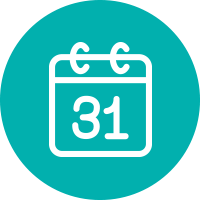Writing
-
Write all uppercase and lowercase letters of the alphabet
-
Write words using phonetic or invented spelling
-
Spell grade level assigned words correctly
-
I, a, the, and, is
-
-
Write in sentences
-
Put spaces between words
-
Attempt to use punctuation
-
Write/draw narrative pieces (small moments)
-
Write/draw informational pieces (how-to books)
-
Write/draw opinion pieces (opinion letters/petitions)
Kindergarten Curriculum
Kindergarten is a year of huge academic growth for a child. You will be amazed at what your child will be able to do by the end of the year! Lake Orion uses the workshop model to help teach kindergartners the foundational skills that they will use throughout the rest of their lives in reading, writing, and math. This model allows students to work at their own developmental level while the teacher differentiates instruction through small group activities and one-on-one conferences. This ensures that no matter where your child is at, they are always getting what they need to further their individual learning. The following are things that your child will be working on throughout the year.
Speaking & Listening
-
Participate in collaborative discussions
-
Demonstrate listening comprehension
-
Speak with clarity, volume, and expression
-
Speak in grammatically correct sentences
-
Shows evidence of vocabulary development
Purposeful Play
Playtime is a big part of our kindergarten day! It is where much of the social and emotional growth of a kindergartner happens, which I believe is just as important as a child's academic growth! The following are just a few reasons we play each and every day.
-
Play supports and helps ALL areas of development: Physical, Cognitive, Language, and Social-Emotional
-
Play provides opportunities to rehearse social skills, learn about acceptable peer behavior, and practice problem-solving and negotiating
-
Play allows children to express and explore emotions, address feelings, anxieties and fears
-
Play helps children build the skills necessary for critical thinking and leadership
-
Play provides opportunities to solve problems
-
Play helps children discover what they can do
-
Play encourages children to express themselves and use their creativity and imagination
-
Play encourages children to express themselves and use their creativity and imagination
-
Play is how a child explores the world. Through play, children construct a sense of order and meaning out of their environment
Source: Play:The Pathway from Theory to Practice. Heideman, S. & Hewitt, D. 2010. Red Leaf Press.

Reading
-
Name all uppercase and lowercase letters of the alphabet
-
Know consonant letter sounds
-
Know long and short vowel sounds
-
Recognize and produce rhyming words
-
Read district sight word list
-
Blend word parts
-
Segment individual letter sounds
-
Count word syllables
-
Ask and answer questions about a text
-
Retell familiar storybooks
-
Identify characters, setting, and events
-
Recall information from nonfiction texts
-
Connect illustrations to the text
-
Compare stories and texts
-
Engage in reading activities
-
Use multiple strategies to solve unknown words
-
Phonics
-
Illustrations
-
Look at surrounding words
-
Math
-
Count to 100 by 1s
-
Count to 100 by 10s
-
Count objects to 30
-
Write numbers to 20
-
Compare numbers and sets of objects using words such as more, less, and equal
-
Represent and solve addition and subtraction equations within 10 using manipulatives (fingers, objects, or pictures)
-
Write simple addition and subtraction equations
-
Fluently add and subtract within 5
-
Decompose numbers 1-10 in more than one way
Ex: 6+4=10 and 8+2=10
-
Compose and decompose numbers 11-19 into tens and ones
Ex: 19=10+9
-
Identify flat (2D shapes) circle, square, rectangle, triangle, hexagon
-
Identify 3D shapes (sphere, cylinder, cube, rectangular prism, cone)







